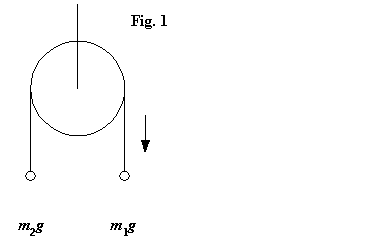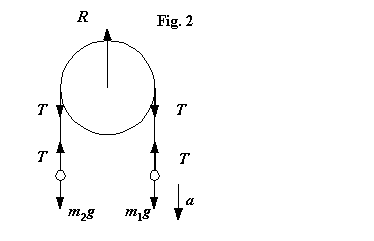These problems involve the consideration of Newton’s Laws of Motion:
First Law: A body remains in a state of rest or continues with uniform motion in a straight line unless it is acted upon by an external force.
Second Law: The resultant force acting on a body of constant mass is equal to the mass of the body multiplied by its acceleration.
Third Law: To every action there is an equal and opposite reaction.
 and
and  (where
(where 

 N
N